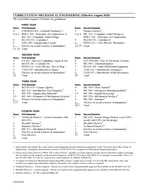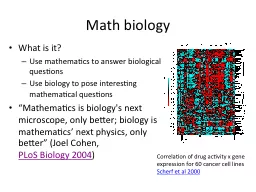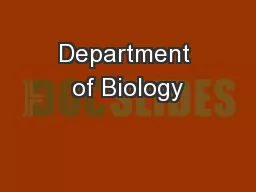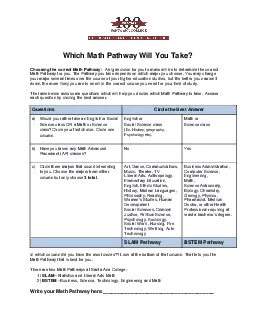PPT-AP Biology: Math for Dummies
Author : FuzzyWuzzyBear | Published Date : 2022-08-04
Science Practices The student can use representations amp models to communicate scientific phenomenon amp solve scientific problems use mathematics appropriately
Presentation Embed Code
Download Presentation
Download Presentation The PPT/PDF document "AP Biology: Math for Dummies" is the property of its rightful owner. Permission is granted to download and print the materials on this website for personal, non-commercial use only, and to display it on your personal computer provided you do not modify the materials and that you retain all copyright notices contained in the materials. By downloading content from our website, you accept the terms of this agreement.
AP Biology: Math for Dummies: Transcript
Download Rules Of Document
"AP Biology: Math for Dummies"The content belongs to its owner. You may download and print it for personal use, without modification, and keep all copyright notices. By downloading, you agree to these terms.
Related Documents










![[EPUB] - Algebra I For Dummies Book + Workbook Bundle (For Dummies (Math & Science))](https://thumbs.docslides.com/900953/epub-algebra-i-for-dummies-book-workbook-bundle-for-dummies-math-science.jpg)
![[EBOOK] - Basic Math & Pre-Algebra For Dummies (For Dummies (Lifestyle))](https://thumbs.docslides.com/901688/ebook-basic-math-pre-algebra-for-dummies-for-dummies-lifestyle.jpg)
![[EPUB] - Basic Math & Pre-Algebra For Dummies Book + Workbook Bundle (For Dummies Math](https://thumbs.docslides.com/901712/epub-basic-math-pre-algebra-for-dummies-book-workbook-bundle-for-dummies-math-science.jpg)

